My first internship was at Maxim Magazine.
I line edited Heineken advertorial copy, pitched Keystone “insert” ideas, and sorted the magazine’s archive. The entire semester I thought I did a terrific job.
Right up until my last day. When they didn’t ask me to return, or recommend me for another internship.
It wasn’t until years later, after working in three different industries — many times for free — did I realize what I did wrong.
I had “what now” syndrome
These days I see it all the time in others, which is both frustrating (don’t do that!) and cringe-inducing (“ugh, I can’t believe I used to do that”).
Here’s what “what now” syndrome looks like:
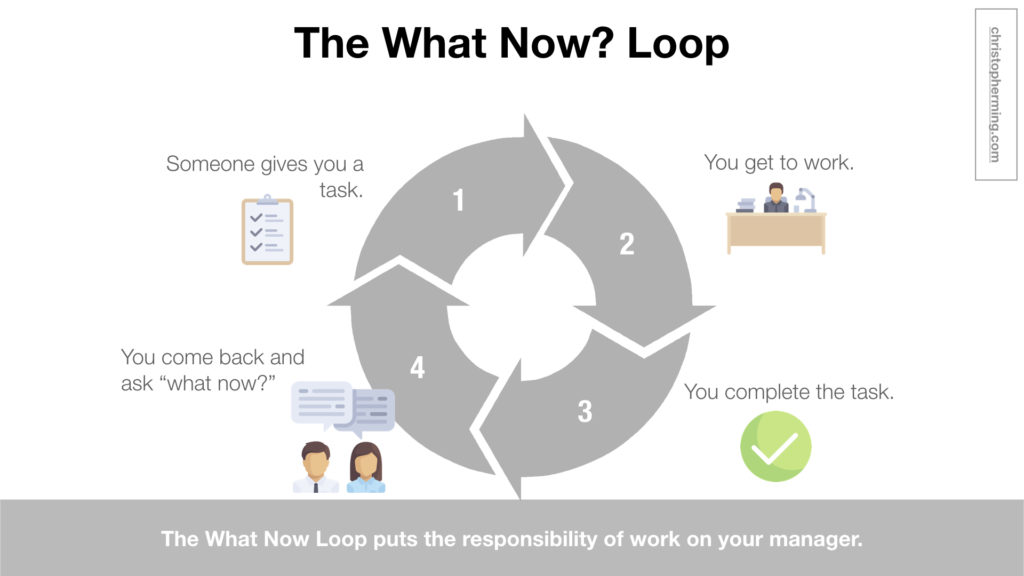

- Someone gives you a task
- You get to work
- You complete the task
- You come back and ask “what now?”
To the untrained eye, it’s hard to see what’s wrong with this picture. You completed a task, and you’re looking for another one. What’s wrong with that?
The problem is you’re putting the hard work — coming up with a meaningful task — on the manager.
It takes time and energy to prioritize the highest leverage task and assign it to someone else — time and energy your manager needs to do THEIR work.
Instead, the best thing you can do (regardless of position, this applies whether you’re an intern or an executive) is what I call, the Show Your Work Method.
Introducing the Show Your Work Method
With Show Your Work,” all the responsibility falls on you, from coming up with and prioritizing tasks to executing the idea. Here’s what showing your work looks like:
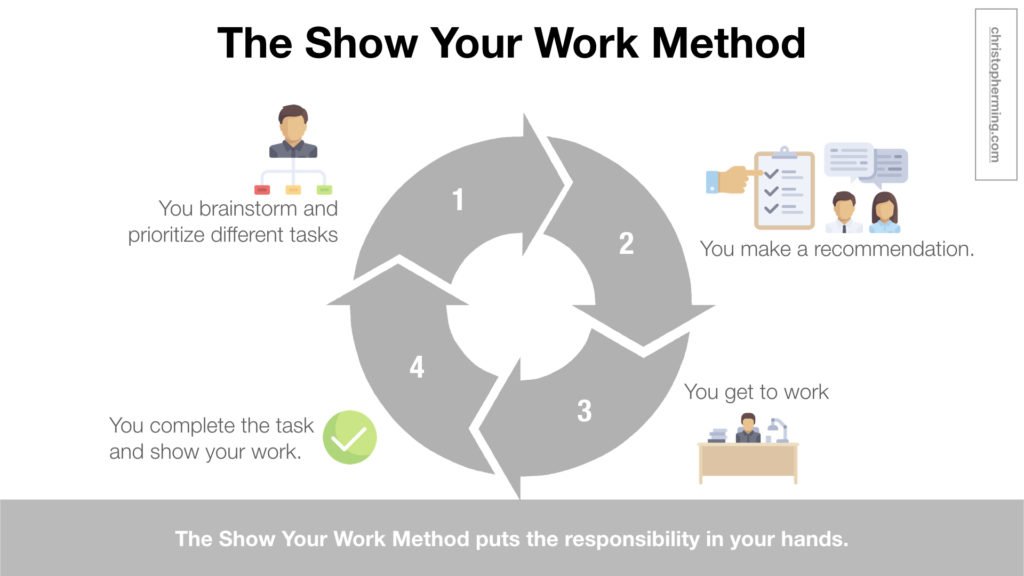

- You brainstorm and prioritize different tasks
- You make a recommendation, showing your work
- You get to work
- You complete the task, showing your work
Three important things are happening when you show your work:
- You’re thinking strategically. You’re making recommendations, and you have to defend why those recommendations drive the mission or objective behind your role, team, or company.
- You’re providing coverage. By spelling out the steps for each of your recommendations, you’re giving your manager coverage. If something goes wrong, it was your plan, not the managers. You own the work — and any mistakes.
- You’re opening bottlenecks. The onus of decision making is removed from the person above you. They’re freed up to focus their energy and time on their job instead of yours.
Showing your work was our modus operandi at I Will Teach. If you wanted to get something done, not only did you have to show the options, but you had to explain and defend the logic behind each option. Then, and only then, could you recommend a course of action.
At Reforge, we call it “think like a personal assistant, not a marketer.”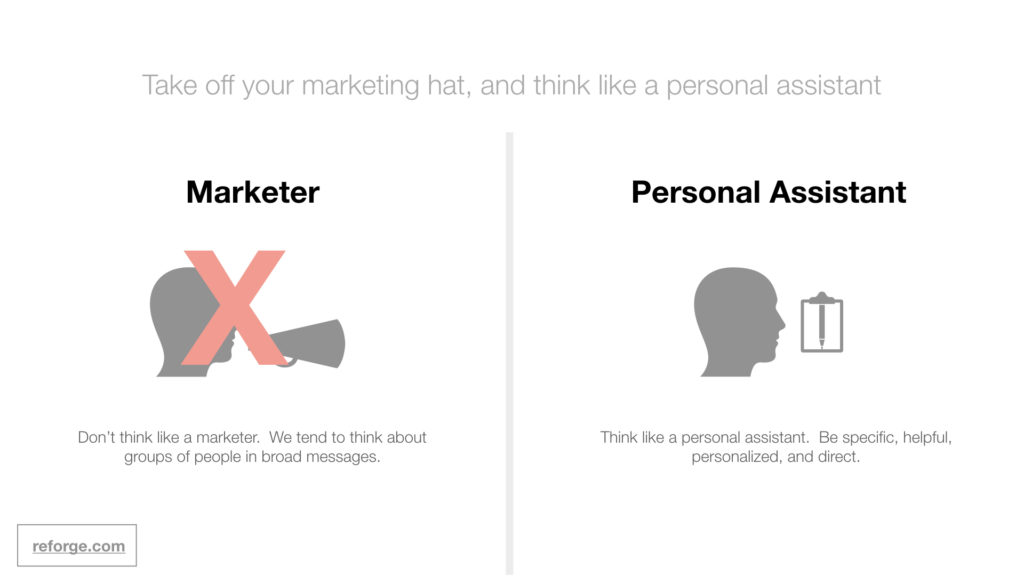

Showing your work takes a little extra time upfront but unlocks more time in the long-run. Instead of waiting for someone else to do the hard work of strategy and execution with your proverbial dick in hand, you’re building a case for what you believe is the best course of action and moving the company toward it.
What showing your work looks like
Here’s a recent example from my work:
Step 1: Make a recommendation
![I make a specific recommendation (“I feel strongly about a [REDACTED] for these surveys”).](http://christopherming.com/wp-content/uploads/2018/04/Email1_show_your_work-1024x576.jpeg)
![I make a specific recommendation (“I feel strongly about a [REDACTED] for these surveys”).](http://christopherming.com/wp-content/uploads/2018/04/Email1_show_your_work-1024x576.jpeg)
I make a specific recommendation (“I feel strongly about a [REDACTED] for these surveys”). Then, I show links to complete surveys so my manager knows exactly what the survey entails, and can edit it for himself if he wants.
Step 2: Defend my recommendation
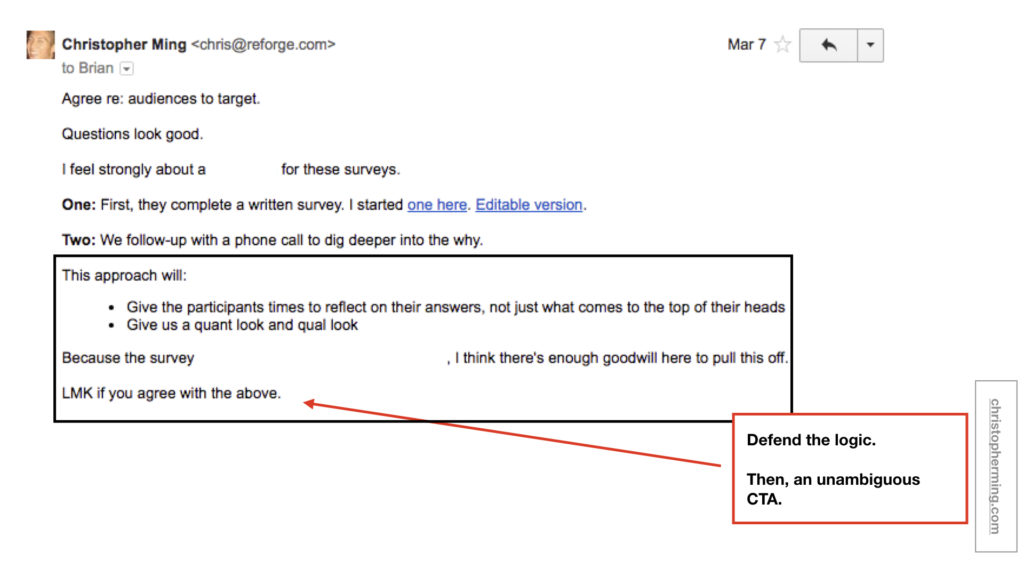

I explain why I’m making this recommendation, then explicitly ask for his sign-off. If you’re making an ask, ASK. There should be no ambiguity.
Step 3: Prioritize next steps


I lay out a course of action after his approval, eliminating unnecessary back-and-forth.
Here’s a slightly different variation I heard recently on Shamanth Rao’s podcast, How Things Grow, from Gina Gotthilf, VP of Growth at Duolingo.


“I had no real world skills. I didn’t know how to use Excel. I took a job at a digital media agency, and I learned tons. I had to Google a lot on the job. I remember, everyday, I had to Google something. Like, “how to HTML”, “HTML for Dummies.”
I was afraid if I asked people questions and they realized I didn’t know what I was doing, I’d get fired, and I’d lose my visa.”1
Ms. Gotthilf was worried if she asked “what now?” she’d get fired (and lose her visa). Instead, she constantly had to show her work, until she became an expert at her work.
Stop asking “what now”. Show your work instead.
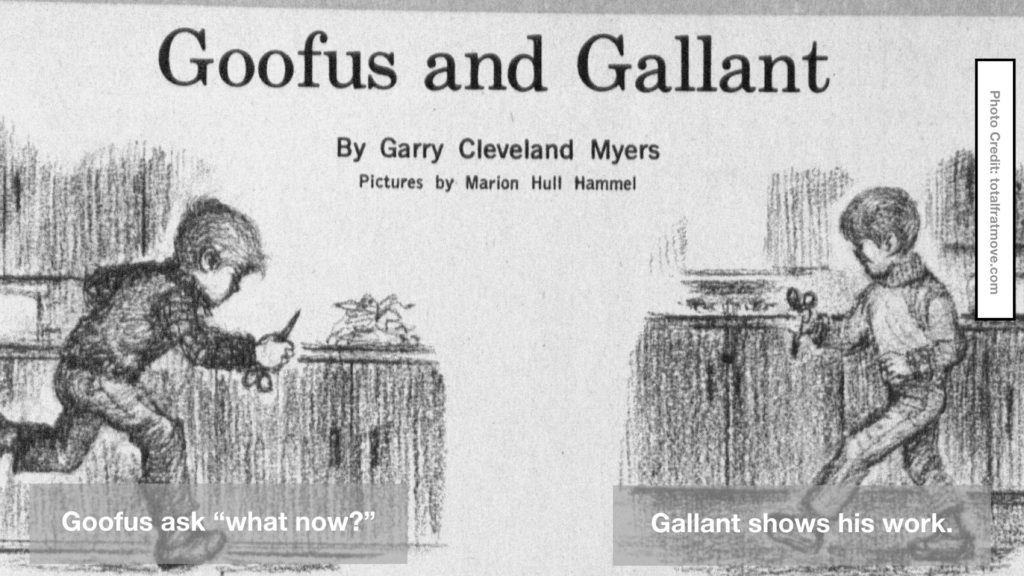

###
Photo Credit: Icons from Freepik

1 Comment
Pingback: Working Remotely: The Best Tips and Tools Learned From 9+ Years of Remote Work | Christopher Ming Blog